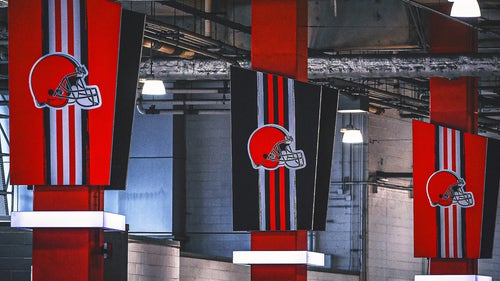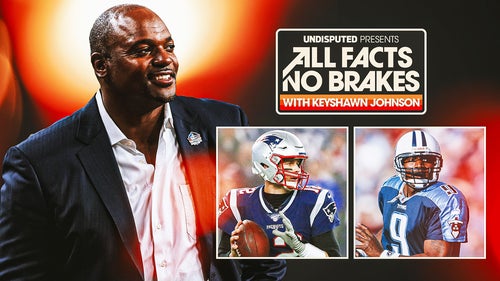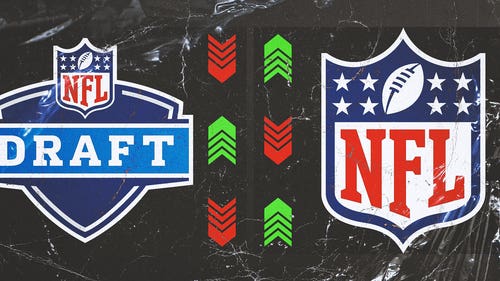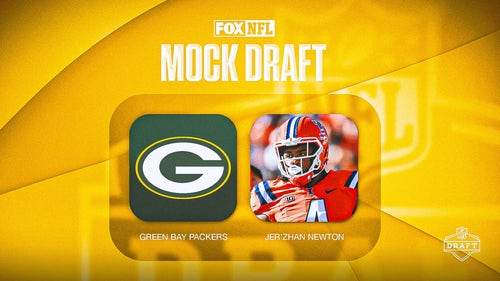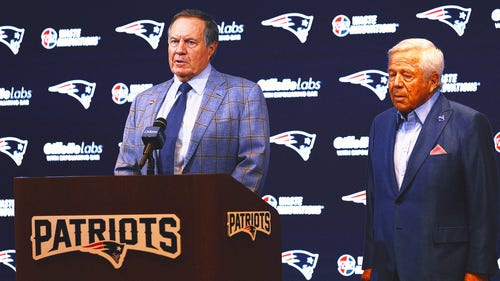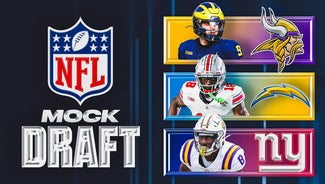
Pereira's Week 11 calls: People are still confused about what is reviewable
The play is under review.
What does that really mean? All you needed to see was a play that took place during the second quarter of the San Francisco-New Orleans game Sunday on FOX to get a clear definition of exactly what it means to the officiating crew.
Here was the situation: New Orleans had the ball, second-and-11 at the San Francisco 36-yard line with 6:36 left in the second quarter. The score was tied 7-7.
San Francisco quarterback Colin Kaepernick attempted a pass to Mario Manningham, but it was intercepted by Corey White, who took the ball back near the San Francisco goal line. But he fumbled the ball out of the end zone as Kaepernick pushed him to the ground.
People get confused on turnovers and scoring plays as to what is reviewable.
This was an interesting play because the initial question looked to be whether or not White fumbled forward into the end zone and out, which would have resulted in a touchback or if the ball had broken the plane to make it a touchdown. The ruling of the field was a fumble and a touchback.
The play was reviewed by the replay official upstairs and stopped for referee Tony Corrente to make a decision on. But here's the key: it wasn't just White's fumble that had to be reviewed, it was also whether or not White was down by contact where he intercepted the ball at the San Francisco 44-yard line.
And it brings to light an interesting point.
When a play is stopped to be reviewed, the entire play is reviewed for anything that is covered under the rule of instant replay.
So even though the play was initially stopped for the fumble, the Corrente reviewed whether White was down by contact as well. The intended receiver, Manningham was very close to White on the play and it wasn't initially clear whether White had possession when Manningham's helmet his shoulder.
By the way, the referee can also look to see if there were 12 players on the filed for either team and that would become reviewable, too. The referee reviews all aspects of the play.
In this case, Corrente could prove that White did fumble out of the end zone and that was the correct call, but he couldn't on whether he was down by contact at the point of the interception, so he let the ruling on the field stand. It was very difficult to determine whether the contact by Manningham occurred after possession by White or before.
Since it wasn't clear, he stayed with the ruling on the field.
This officiating game isn't as easy as these guys make it look, folks.
DELAYS, DELAYS
The Windy City turned into Tornado City Sunday.
The game between Baltimore and Chicago at Soldier Field was suspended at 4:51 of the first quarter with the Ravens leading 10-0. The storm clouds look ominous even before the game started and according to the Chicago Tribune, the National Weather Service issued an "extraordinarily rare" tornado watch until 4 p.m. CT.
The decision when to restart the game is made by a group of people, which includes the referee, who have the ultimate authority. But he'll get input from the stadium operations people who have access to the Doppler radar system. Also, the referee will get input from the officiating supervisor in the press box, who will be in contact with the game operations dept. in the NFL offices in New York. With input from all of those people, they will make a decision on when it's safe to resume. If it can't be today, then they will include the commissioner on what the next step should be.
A lot of people have asked, what would happen if they weren't able to resume the game today? Well, it would have been today, or if the weather didn't let up, tomorrow. The commissioner is the only one who can make the decision to actually delay the game until tomorrow.
Beyond the tornado watch, severe thunderstorms were predicted for the Chicago area that could include thunderstorms, hail and strong wind gusts that could reach up to 75 miles per hour.
In other words, Bear weather, only for the real kind.
The game ended up being resumed at 3:25 p.m. ET.
Double trouble
How do you have a double muff on one play?
It's rare ⦠and it takes a lot of confusion ⦠but that's what happened in the Arizona-Jacksonville game Sunday.
Here was the situation: Jacksonville had the ball, fourth-and-10 at the Arizona 42-yard line with 5:46 left in the third quarter. Arizona led 24-14. Jacksonville punter Bryan Anger kicked the ball 33 yards to the Arizona 9-yard line where the Cardinals' Patrick Peterson muffed the catch and it appeared to be recovered by the Jaguars. However, the ball was awarded to Arizona at its own 10-yard line.
That was Muff No. 1.
Muff No. 2 occurred when the officials let Jacksonville challenge the play. It's not reviewable. Period.
Recovery of a loose ball in the field of play is not reviewable. Whatever the officials ruled on the field stands. Not only did Jacksonville not get the ball, but the Jaguars were charged with a timeout for the challenge because, unfortunately, the officials went ahead and reviewed the play.
The Jags should have been told up front that they couldn't challenge the play. Therefore, they wouldn't have lost a timeout.
Remember, when you are dealing with a loose ball, whether it's a fumble or a kick or whatever, it comes down to who the officials rule to have recovered the ball in the field of play. That call is final.
The only time it can be reviewed is if it occurs in the end zone or if it's at the sidelines, if the recovering player was touching out of bounds.
These are the types of plays that drive me nuts. It was not a judgment call, but was a rules-based decision that the officials and replay official should never have allowed.







































































































































